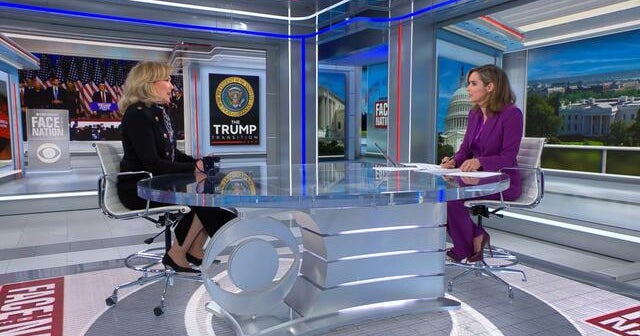CBS News
3 benefits of choosing a HELOC as inflation continues to cool

Getty Images
The Federal Reserve has kept its benchmark interest rate paused at a 22-year high over the last year — leaving borrowers with few affordable options to consider. For example, the average credit card rate is closing in on 24% currently and the average personal loan rate has hovered above 12% for months on end. These types of double-digit rates cause interest charges to rack up quickly, making it quite expensive to borrow money.
Homeowners have had a cost-effective choice at their fingertips, though: tapping into their home’s equity with a home equity loan or a home equity line of credit (HELOC). Both offer competitive rates compared to unsecured loan options, and homeowners also have a significant amount of equity right now — nearly $300,000 on average — making this type of borrowing even more attractive.
But while both home equity loans and HELOCs offer benefits in today’s high-rate climate, the latest inflation report, released this week, shows that inflation has continued its downward trend. Last month, inflation dropped to 2.9%, according to the report — its lowest level in three years. In turn, a HELOC might now be the best way to tap into your home’s equity. Here’s why.
Ready to get started? Find out the home equity loan and HELOC rates available to you here.
3 benefits of choosing a HELOC as inflation continues to cool
There are a few reasons why a HELOC could make more sense than a home equity loan with inflation cooling, including:
Potential for lower interest rates
HELOCs generally come with variable interest rates, meaning that the interest rate can change over time depending on the overall rate environment. In normal economic landscapes, this can be risky, as the rate on your HELOC could climb as the economic environment shifts. However, in a climate where inflation is cooling, the variable rate structure of a HELOC could work to your advantage.
As inflation decreases, there’s a higher likelihood that the Federal Reserve will lower its benchmark rate. Most experts expect the Fed to start slashing rates in September, and should inflation continue to cool over time, the rate cuts are likely to continue. As this happens, HELOC rates, which are tied to the prime rate, may decrease as well. This means you could potentially benefit from automatically lower interest rates in the future.
Learn more about your home equity borrowing options now.
Borrowing flexibility
Another advantage of a HELOC in a cooling inflation environment is its inherent flexibility. Unlike a home equity loan, which provides a lump sum with a fixed repayment schedule, a HELOC functions more like a credit card tied to your home’s equity. This revolving line of credit allows you to borrow only what you need, when you need it, during the draw period (typically 10 years).
This means you’re only paying interest on the amount you’ve borrowed rather than on the entire loan amount from day one. For example, if you’re planning a series of home improvements, you can draw funds for each stage of the renovation as it occurs, rather than taking out a lump sum at the beginning and paying interest on money you’re not yet using.
As you repay the principal on your HELOC, that credit also becomes available again (during the draw period). This revolving nature can be particularly useful for ongoing projects or businesses where you might need to access funds periodically. It provides a financial cushion without the need to apply for new loans each time you need additional funds.
No need to refinance
With a HELOC, as market interest rates decline in response to cooling inflation, your borrowing costs decrease automatically. This occurs without any action required on your part: no paperwork, no credit checks, and perhaps most importantly, no refinancing costs.
If you have a fixed-rate home equity loan, you would need to go through a refinancing process to take advantage of the lower rates. Refinancing can be a smart move to save money, but it comes with extra costs, including application fees, appraisal fees and title search fees. These costs can add up to thousands of dollars, eating into any potential savings from the lower interest rate.
This feature of HELOCs not only saves money but also provides peace of mind. You don’t have to constantly monitor rates and make difficult decisions about whether the savings from a lower rate justify the costs of refinancing. Instead, you can focus on using your funds effectively.
The bottom line
While both home equity loans and HELOCs have their merits, the cooling inflation trend is enhancing the appeal of HELOCs. Their flexibility, the potential for lower interest rates and ability to automatically benefit from rate drops without refinancing make them an attractive option in the current economic climate. It’s important to remember, though, that like any form of borrowing against your home, a HELOC comes with risks, so be sure to carefully consider your financial situation before deciding on a home equity borrowing option.
CBS News
Face the Nation: Beshear, Gordon, Birx

Watch CBS News
Be the first to know
Get browser notifications for breaking news, live events, and exclusive reporting.
CBS News
Dr. Deborah Birx says she is “excited” for data discussions in RFK Jr.’s confirmation hearings

Watch CBS News
Be the first to know
Get browser notifications for breaking news, live events, and exclusive reporting.
CBS News
GOP Rep. French Hill says it’s up to House Ethics Committee to decide on releasing Gaetz report

Watch CBS News
Be the first to know
Get browser notifications for breaking news, live events, and exclusive reporting.


